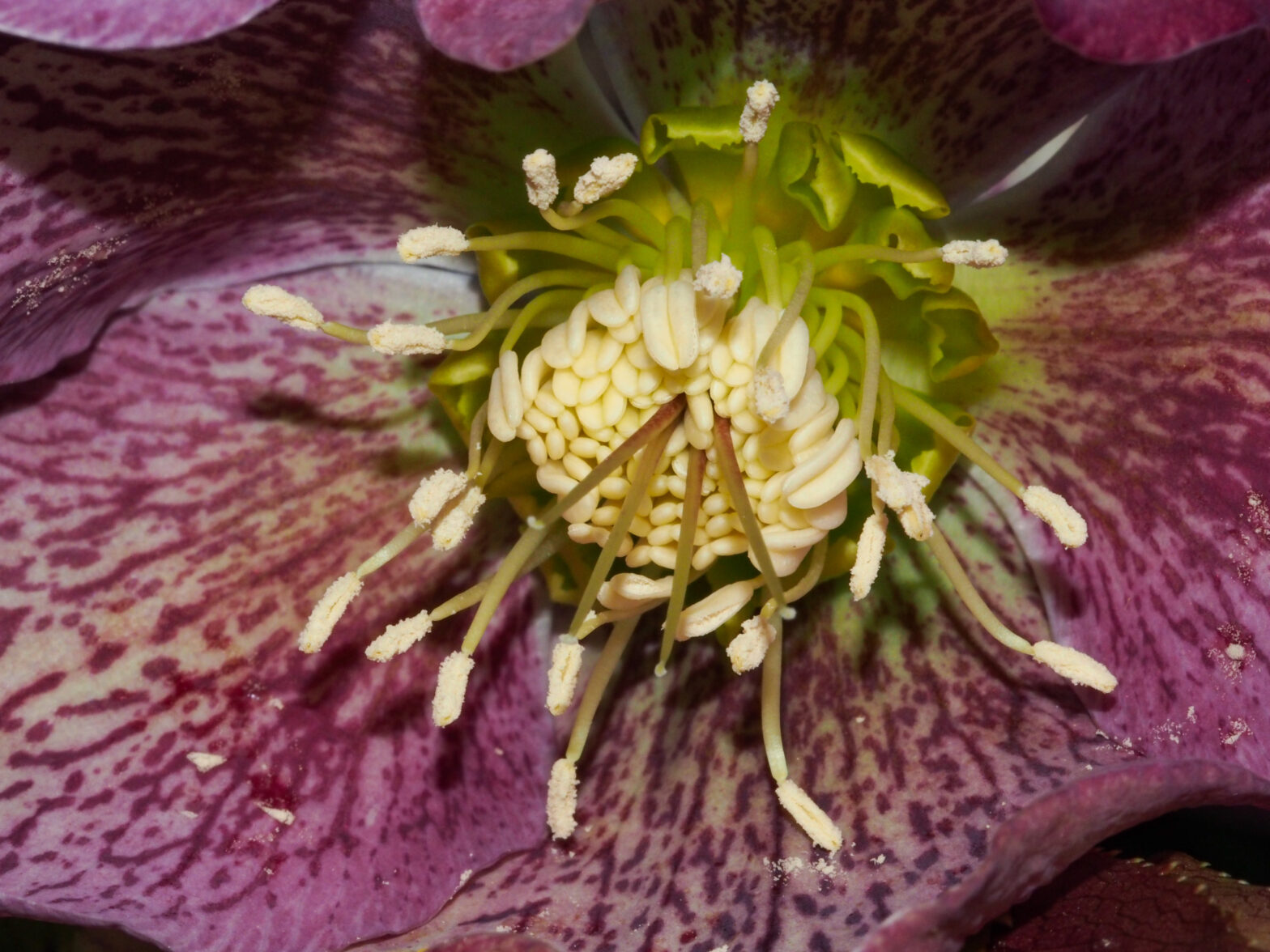Hellebores come from Eurasia but have happily settled into gardens across the world. Mine came with the house, several plants flanking the sidewalk and largely shaded except for a few hours of angled sun. Though showing buds for nearly a month, the first flowers just opened this week.
Their blossoms are highly specialized, and not what they first appear. With most plants the outer parts of a flower are the sepals, and usually they are green and look somewhat like leaves, while the colorful part is composed of petals. In hellebores, the large colorful parts are composed of sepals rather than petals. The petals have been modified into nectaries, which are short and tubular. These store nectar for a variety of early pollinators, especially bees once they awake from winter slumber. The sepals cling to the flower as the seeds mature, often changing color but retaining a faded beauty for quite a while.
An historical aside is their use as one of the first forms of chemical warfare. There was a siege of Kirrha, a city in central Greece, from 595 to 585 B.C. People living there had stopped pilgrims going from Athens to Delphi, to worship Apollo. Nebros, a doctor who was an ancestor of Hippocrates, suggested putting crushed hellebore in the city’s water supply. The citizens had such severe digestive upset that they could no longer defend Kirrha, and the city was destroyed, allowing pilgrims to pass freely once again to worship.
The name hellebore comes from a combination of the two Greek words, helein which means to injure and bore which means food. This is a warning that you shouldn’t eat the plant since all parts are toxic, as the people of Kirrha learned the hard way. In modern English word usage, bore usually means tedious or dull, but I find they are anything but boring with their large winter flowers in a rainbow of colors. I’m just careful to admire them when I’m not hungry and tempted to nibble on their colorful sepals or sip from their modified petals!
There is so much to like from these hardy plants. It’s easy to see why they have long been a popular staple of gardens. Winter flowers are always especially welcome, before the garden has fully woken up. No matter how many times they are knocked to the ground by frost or snow, they pick themselves up and keep blooming. Deer must know they are poisonous and avoid them. With their colorful charm, they provide a warm welcome as I walk up my sidewalk, ushering me not only into my home but the start of a new season.
